Exhibition place:Textile Conservation Gallery
Exhibition time:2023.11 - 2024.2
Sponsors: Zhejiang Provincial Department of Culture and Tourism
Zhejiang Provincial Cultural Heritage Administration
Host: China National Silk Museum
Acknowledgement: We would like to thank Yahong Gao, Qixiong Zeng, Yin Xia, Hesheng Wang, Recep Karadag and Paul Starosta for providing the images of plants and insects.
Preface
Natural dyes are main color sources of ancient textiles. They can be extracted from plants or animals. Using High Performance Liquid Chromatography-Mass Spectrometry (HPLC-MS), Surface Enhanced Raman Spectroscopy (SERS) and other scientific analysis methods, dyes of ancient textiles and their origins can be traced, which provides important information for confirming what techniques were used on these textiles, and when and where they were produced. The exhibition displays textile fragment collections from the Northern Dynasties to Yuan Dynasties (the 5th -14th century A.D.), involving brocade, tapestry and embroidery. Near 20 natural dye species were discovered on these precious textiles with multi-techniques. The dyes are suggested from the northwest China, Hunan and Hubei Provinces, South Asia, and even as far as West Asia. Dye analysis can not only give clues to dyeing materials of textiles directly, but also can, with weaving techniques and pattern features, reflect printing and dyeing technologies and cultural exchanges between the East and the West in the Middle Ages indirectly.
The Northern Dynasties (the 5th -6th century A.D. )
When ancient Chinese silk was imported to the West, patterns featured by Central Asia, Western Asia, and even Europe were on the silk. Also, dye species and dyeing technologies were multi-regional.

北朝新月纹绣

北朝深褐色龟背地卷草纹锦

北朝楼堞对兽纹锦
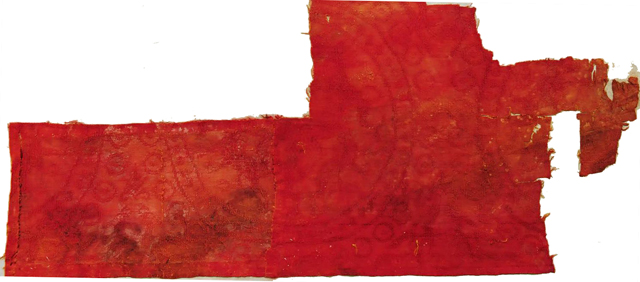
北朝朱红色联珠对兽纹暗花绮
Rubia species (madder)
Madder is the main source of natural red dyes, including dyer’s madder (Rubia tinctorum), Indian madder (Rubia cordifolia), and Japanese madder (Rubia argyi). The first two are widely distributed in the world, and for China, mainly in the northwestern part. The variety of Rubia can be distinguished through anthraquinone compounds in it.
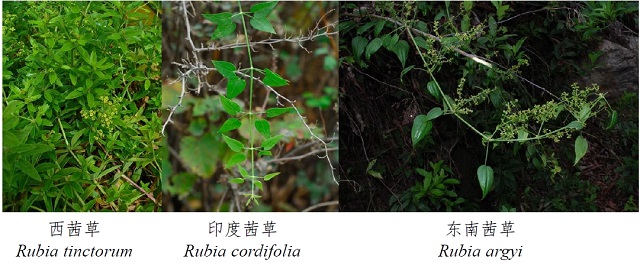
Berberine-based Dyes
Dye plants containing berberine, used to dye yellow or to make green by overdyeing with indigo, mainly are cork tree (Phellodendron spp) and Barberry (Berberis spp). There are two Phellodendron species, Chuan-huang-bo (P. chinense) and Guan-huang-bo (P. amurense), which are grown in Hunan and Hubei Provinces, and the Northeast and North China respectively. Besides berberine, barberry contains relatively rich jateorhizine as well.

Black Dyes
Tannin-based dyes, mordanted with iron, can produce black with different grades of purity. Shell of oak (Quercus acutissima) and gallnut of Rhus chinensis are commonly tannin-based dyes. Peel of pomegranate and gallnut of Aleppo oak (Quercus infectoria) can also be used to dye black, but textiles dyed with them often appear yellow or purple glows. Pure black can only be obtained by overdyeing and mordanting with a variety of dyes.

Tang Dynasty (the 7th- 10th century A.D. )
Weaving techniques and pattern exchanges were more frequent between the East and the West during the period. Therefore, the colors of textiles were more diversified and the natural dyes had more sources.
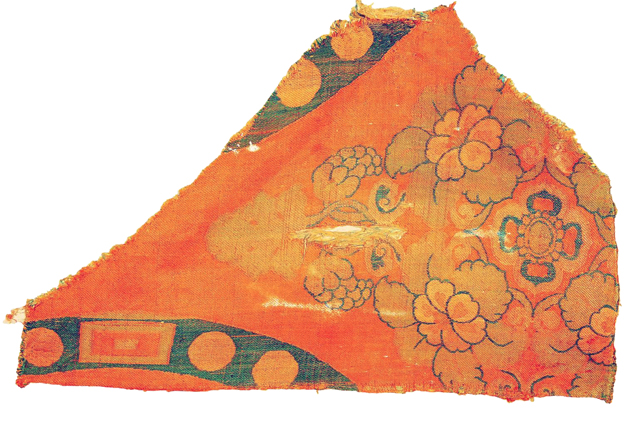
唐代联珠宝花纹锦

唐代宝花纹锦
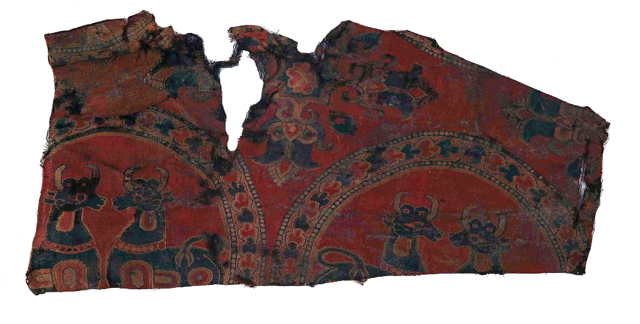
唐团窼对牛纹锦残片
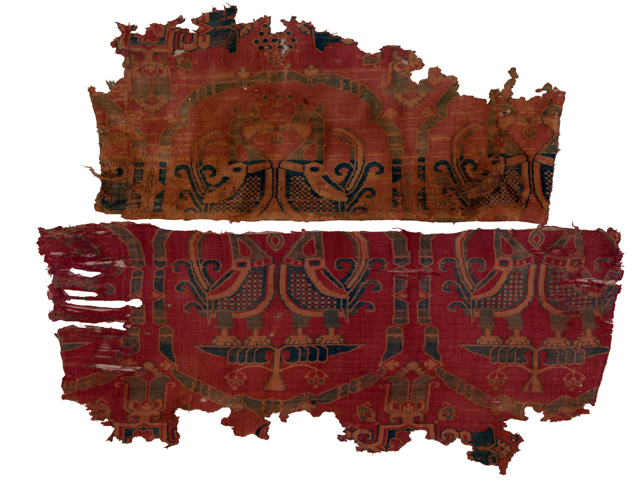
唐代红地团窠对鸟纹锦
Scale Insect Dyes
The other important sources of natural red dyes are scale insects, including American cochineal (Dactylopius coccus), kermes (Kermes vermilio), Polish cochineal (Porphyrophora polonica), Armenian cochineal (Porphyrophora hamelii), Sophora cochineal (Porphyrophora sophorae), and lac insect (Kerria spp). Except for American cochineal, other scale insect dyes are distributed in Eurasia.
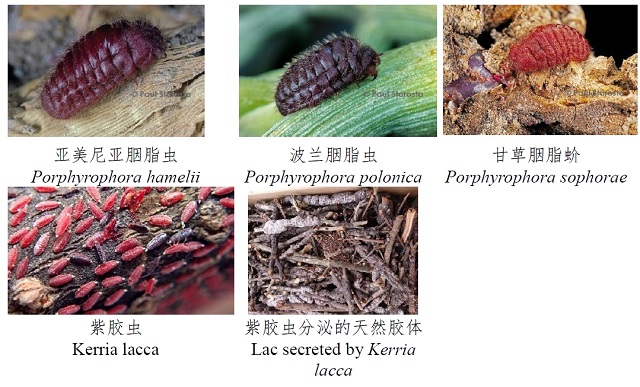
Indigo Dyes
Almost all natural blue dyes are obtained from indigo-based dyes, which include woad (Isatis tinctoria), Assam indigo (Strobilanthes cusia), Indian indigo (Indigofera tinctoria) and dyer’s knotweeds (Polygonum tinctorium). The four, whose major coloring matters are indigotin and indirubin, are distributed in China. Except for woad, it's very difficult to identify the plant sources of indigo-based dyes.

Liao Dynasty (the 10th -14th century A.D.)
Dye variety had no evident increase at this time, but the application of embroidery and Kesi techniques made textile colosr more layered.
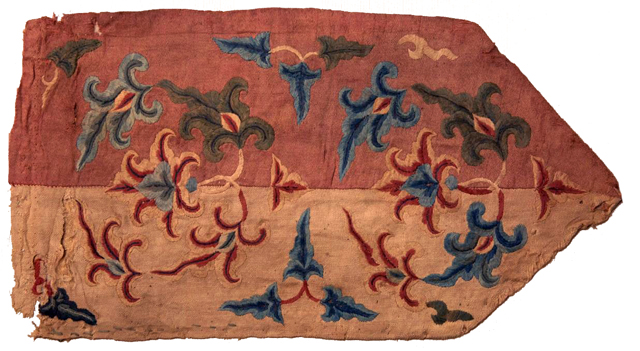
辽代绫地刺绣花卉小幡
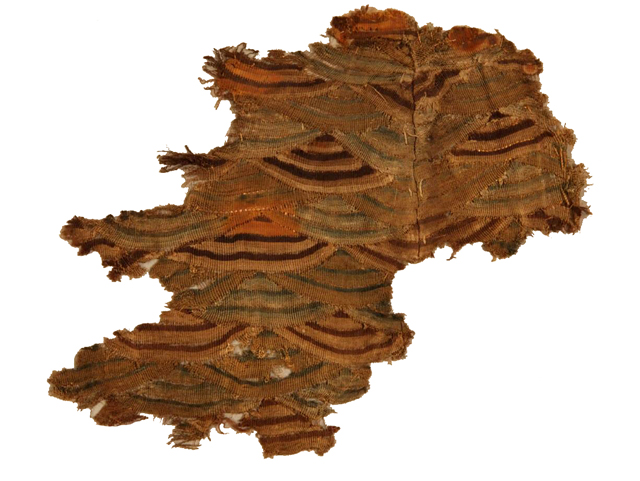
辽代水波纹缂丝
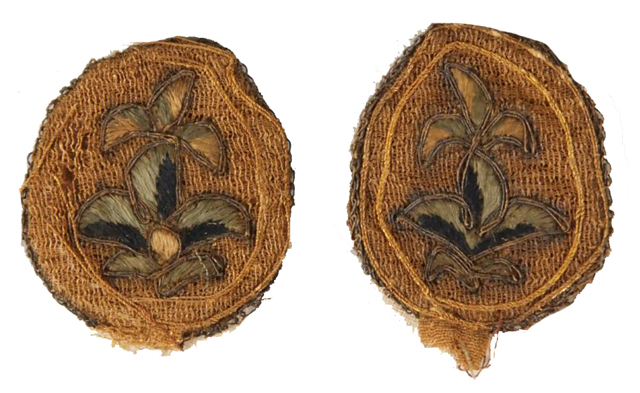
辽代罗地压金彩绣花卉纹饰件
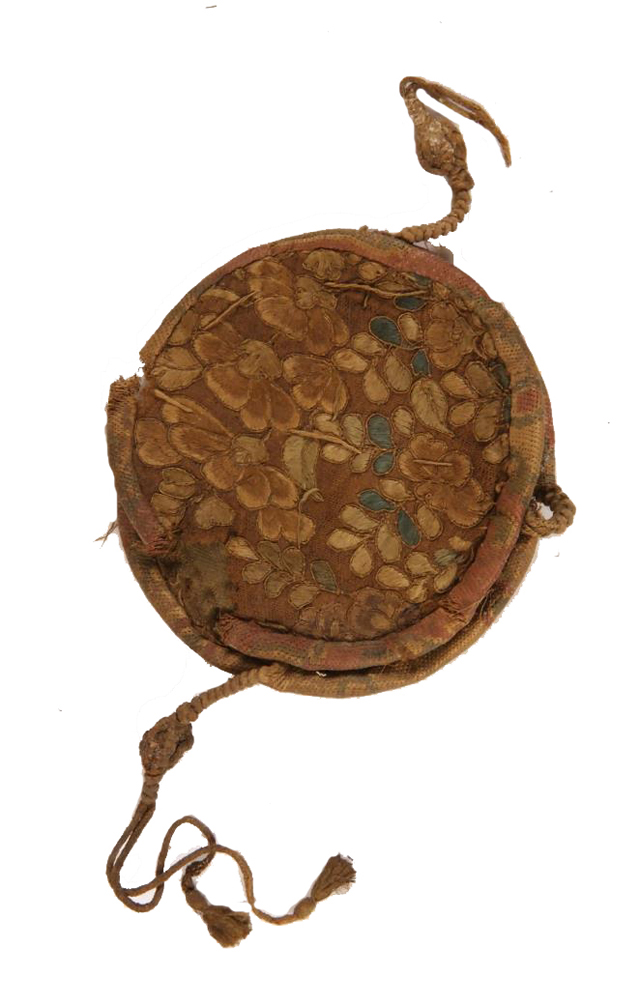
辽代罗地钉金彩绣花卉纹锦缘囊
Purple Dyes
Natural purple dyes have very limited sources, murex purple (Bolinus lrandaris) and gromwell (Lithospermum erythrorhizon) are important representatives. The extraction and dyeing techniques of the first one are extremely complicated, and it hasn’t been proven to be used in ancient Chinese textiles yet. The second one is distributed in the northwest, north, southwest and other regions of China, but hard to stain.

Pigments and Gold Thread
To dye textiles, pigments like cinnabar, red iron oxide, yellow ochre, orpiment, realgar and azurite are sometimes utilized for printing with adhesives. The application of metal materials give special colors to fabrics. Whether they are woven, embroidered gold threads, or pasted gold foil, are favored by the royal and noble families.
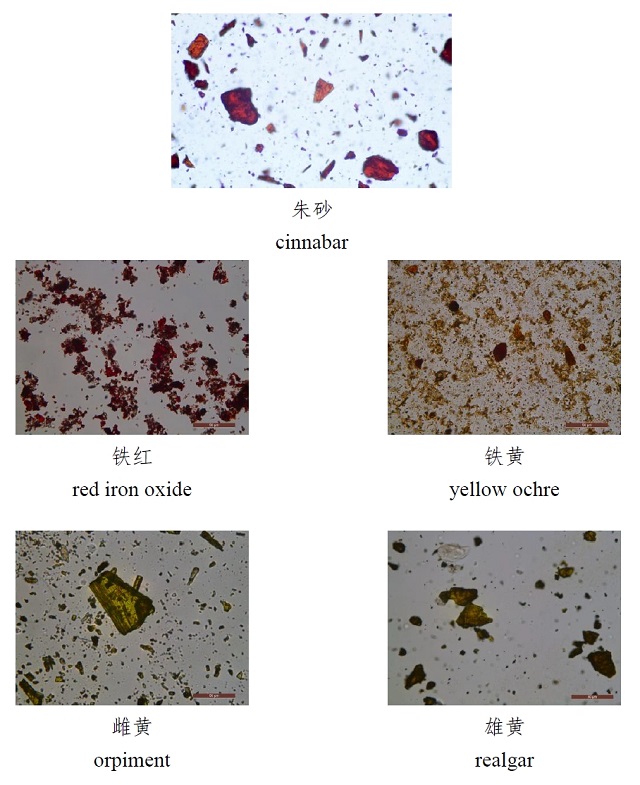
Song and Yuan Dynasties (the 10th -14th century A.D. )
After the 10th century, there were more varieties of natural dyes. Although the Song and Yuan Dynasties were ruled by different nations, their dyeing techniques could be traced to the same origin.
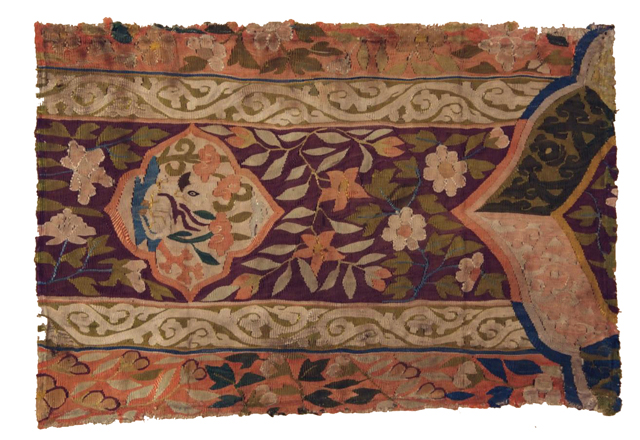
元代缂丝天鹿纹云肩残

宋代红地花纹纬锦黄皮靴
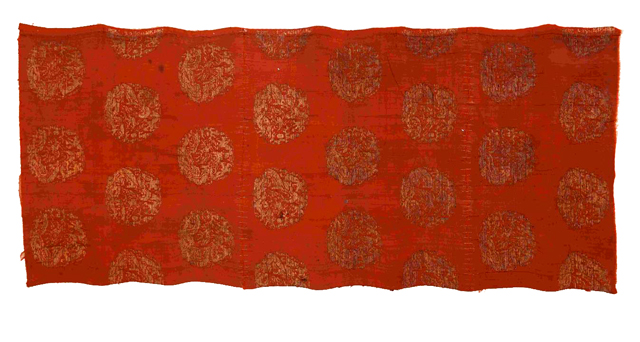
元红底团花纹织金锦残片

宋代蓝地大团花纹锦
Safflower
Safflower, introduced to ancient China from the West in the Han Dynasty, can give different reds with high purity. However, carthamin, the main coloring matter of the dye, has poor fastness.
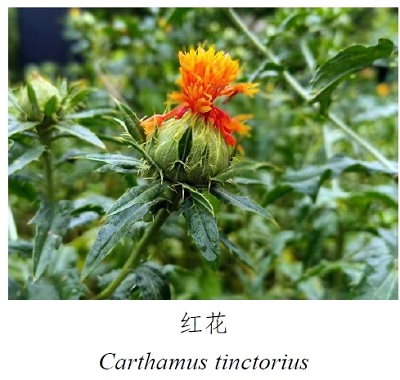
Flavonoid Dyes
The plant sources of flavonoid dyes are the most abundant, among which weld (Reseda lutea), Persian berries (fruits of various Rhamnus), and buds of pagoda tree (Styphnolobium japonicum) are representative yellow dyes in Eurasia. Due to the wide variety of flavonoid compounds, accurately identifying the source of flavonoid dyes is a challenge.

Conclusion
The exhibition reveals the dye sources behind the textile fragments, suggesting what dyes are on the textiles from the 5th to 14th century: red dyes are dyer’s madder,Indian madder, Armenia cochineal, lac insect and safflower; yellow dyes are Chuan-huang-bo, barberry, buds of pagoda tree and luteolin-based dye; blue dye is indigo, black dye is tannin and purple dye is gromwell. This research provides cultural relic evidence for the history of dyeing and weaving during the period, scientific basis for the protection of ancient textile colors, and creative ideas for the contemporary application of natural dyes.
 Pay attention to us
×
Pay attention to us
×